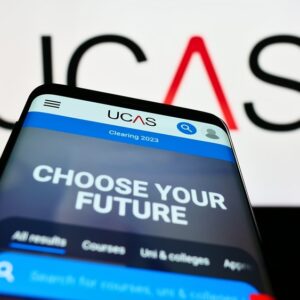Memories, like the corners of your mind, are unstable things at the best of times. For example, you might find it hard to recall your mother’s birthday or the name of your cat. This doesn’t bode well for the mass memorisation of facts and figures that is necessary for the Leaving Cert. However, not all is lost. Misty, watercoloured memories can be improved – it’s just a case of choosing the right approach.
Revise, Revise, Revise!
A quick glance at Rocket Science for Beginners doesn’t mean that you will be able to blend in at the NASA Christmas party. To really remember something, you have to understand it. Reading intelligently is one of the best ways to consolidate material that has been covered in class. A good way to do this is to first skim the chapter in question, noting the main sections. Then read the chapter fully, taking notes as you go. If your teacher has thrown any hints on what might come up, then pay special attention to these parts of the text. Perhaps even break out the highlighter pen. Some of these teachers have been in your school since Fianna Fail and the PDs were one big, happy party. Who knows what connections they may have?
Once you have a fair idea of what is going on in the wonderful world of Home Rule/Plate Tectonics/Earthworms, then you can set about binding the facts immutably to your brain. One way of the best ways to do this is through mnemonic devices – ways of associating facts, concepts or theories with sounds. These sounds can come in the form of acronyms, songs, peg words or phrases.
Memorisation Tricks
One of the most famous acronyms for learning is HOMES, which contains the initial letter of each of the American Great Lakes – Huron, Ontario, Michigan, Erie and Superior. Acronyms are easier to remember if you try for a meaningful world – SMEHO just doesn’t glide off the tongue. However, even thinking up acronyms can be helpful – the more you think about the subject, the more you will remember.
Songs are more difficult to come up with but once you have one, the little beggar will stick in your head, way into your twenties. Be creative. You can choose any song you want, the catchier the better. But don’t just limit yourself to pop. History students might enjoy the following bastardisation of the popular Christmas Carol, Oh, come, Oh, come, Emmanuel. Oh come, oh come King Victor Emmanuel, For you shall invite Mussolini to form a government This all happened after the March on Rome (in 1922) And Mussolini organised a Vic March.
Rhyme and reason
As well as earning you top marks, it can also be used to enliven your choice of family gathering. Peg words are the academic equivalent of cockney rhyming slang. One is bun, two is shoe, three is tree, four is door, five is hive, six is sticks, seven is heaven, eight is plate, nine is line, ten is hen.
So how is this useful? Well, if you wanted to remember that India is the second most populated country in the world, you might imagine it in a boot. The dynamic image makes dry facts and figures much easier to remember. If you have a long list of things to remember, then you might consider making up a few choice phrases to help you out.
Biology students could consider the following – Christina Aguilera And Iggy Pop Love Cooking Spinach Cakes, Rarely Finding Vomiting an Option. This is actually a list of the parts of the eye, cunningly disguised as a gossip titbit from the world of entertainment. Unconvinced? Review the evidence. Cornea, Anterior chamber, Aqueous humour, Iris, Pupil, Lens, Ciliary body, Sclera, Choroid, Retina, Fovea, Vitreous humour, Optic Nerve.
All these mnemonic devices can help you dredge up the right information at the right time. Generally the quirkier and ruder they are, the better. Having a supply of them can also help you in an exam when your mind goes blank. Just take a deep breath and remember Christina and Iggy hunched over the toilet bowl. Your memory is your indentured servant – you just have to learn to work it to the bone.
by Aoife Rogers












Comments